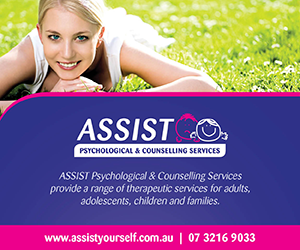As someone responsible for a drug treatment program for over seven years, I was often asked to describe what drug treatment is. As we all know this is a difficult question because there is no single answer. Drug treatment means different things for different people and different substances, but trying to answer a direct question by entering into explanations about the subtleties of drug treatment has often proven unsatisfactory both for me and the person asking the question.
 In an attempt to address my inadequate descriptions of addiction and treatment, I explored many possible responses – some seemed quite superficial and others were overly complicated. In the end I adopted and adapted a version of the Navajo first people’s description of addiction which drew on their favorite evil character, a coyote. A series of stories by Will-Mayo (1993) was later adapted and interpreted by Jason Aronson in the Coyote Speaks series.
In an attempt to address my inadequate descriptions of addiction and treatment, I explored many possible responses – some seemed quite superficial and others were overly complicated. In the end I adopted and adapted a version of the Navajo first people’s description of addiction which drew on their favorite evil character, a coyote. A series of stories by Will-Mayo (1993) was later adapted and interpreted by Jason Aronson in the Coyote Speaks series.
The fox and the billabong (an adaption by David Crosbie)
The fox is a very clever and wily animal who has thrived on the fringes of human settlements while being an imposter and disrupter in the Australian bush.
One day, a fox went down to a billabong where the water was still, hoping to catch a fish or at least drink from the quiet water. As he approached the billabong, he saw other animals; wallabies, wombats, kangaroos, lizards, all drinking next to parrots and cassowaries. There was a crocodile looking for fish, and hundreds of insects buzzing across the surface.
When the fox put his head down to drink, he jumped back in fright. He had seen a monster in the billabong and was scared. He waited a while, watched the other animals who seemed to be drinking quite happily, decided the monster must have gone, again approached the billabong and put his head down to drink. Again he saw the monster and jumped back from the water, scared for his life.
He watched the billabong for a while, but gave up. As he turned from his safe resting place, he heard a very loud deep voice telling him to be careful. He turned to see a toad nearby.
‘You are a small and ugly animal even though you have a deep voice,’ he said to the toad.
‘Close your eyes fox, then you will not see me as any of those things,’ said the toad.
As the fox started to move away, he thought about the toad, then turned and again approached the billabong. This time when he put his head down to drink, he closed his eyes, and there was no monster. If he kept his eyes closed, he could go on drinking as much as he wanted to, believing the monster had been vanquished.
Addiction is about closing your eyes to who you are. Treatment is about learning to drink with your eyes open. When you can look at yourself and feel safe and content in who you are, you are ready to begin moving on from treatment.
There is much we can do to support people in the alcohol and drugs and mental health fields, but rarely is our work as effective as when we are giving people something to feel proud about, something that will help them value who they are. This is why employment, housing, recreation and artistic pursuits can all be so important in ‘treatment’ programs. It is why drugs that can relieve symptoms are often vital, because they buy time for achievement, for doing things that create meaning and value for people.
The story of the fox and the billabong is not the perfect metaphor for addiction and treatment. It does not apply to all people or all treatments, but it often helped people understand.
In my current role I am often asked about the value of the work done in the broader charities and the not-for-profit sector. I have struggled for a metaphor that reflects what a difference our sector makes in the lives of so many people, in so many communities, in value to us all.
There are measures of economic and employment benefits, but somehow these seem like inadequate proxies.
Unfortunately, I find all too often that the real achievements of our sector are not clearly obvious to outsiders, that the stories are not being told, that despite its size and scope and huge role in our communities, our sector continues to be undervalued.
As a sector we have yet to find a metaphor or a measure that can be given as much weight as the latest Dow Jones index. But closing our eyes – while others claim their contribution is what matters in making the billabong a safe, happy and thriving place – is not a solution.
David Crosbie, CEO, Community Council for Australia.























